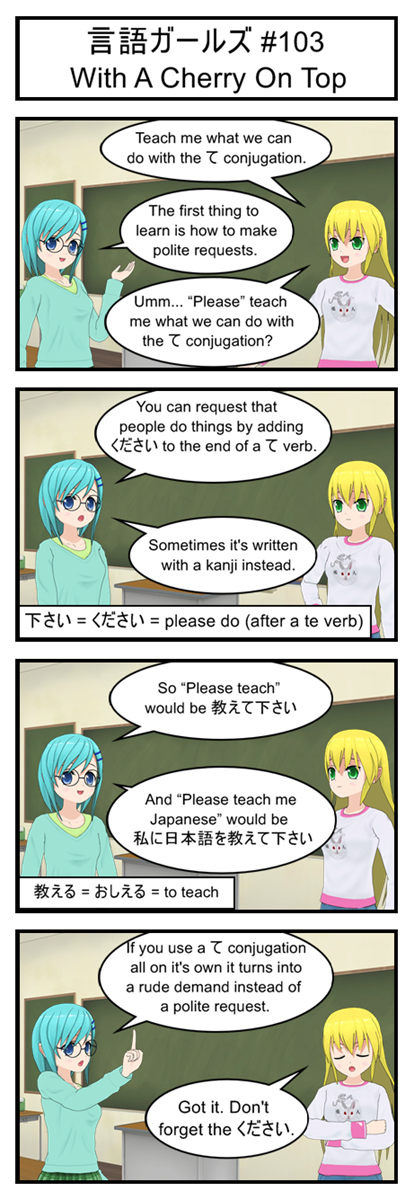
Pretty straightforward and I hope everyone can see why oshieru was conjugated the way it was. But I also want to point out that “ni” at the beginning of the sentence. In this case the “ni” is pointing out the target of our verb. Who do we want to get taught? “Me” or “Watashi”.
Just a quick example of “ni” being used for something more abstract than your normal “to mark a physical location”.
Vocabulary
下さい = ください = please do something for me
教える = おしえる = to teach
Transcript
言語ガールズ #103
With A Cherry On Top
Yellow: Teach me what we can do with the て conjugation.
Blue: The first thing to learn is how to make polite requests.
Yellow: Umm… “Please” teach me what we can do with the て conjugation?
Blue: You can request that people do things by adding ください to the end of a て verb.
Blue: Sometimes it’s written with a kanji instead.
Blue: So “Please teach” would be 教えて下さい
Blue: And “Please teach me Japanese” would be 私に日本語を教えて下さい
Blue: If you use a て conjugation all on it’s own it turns into a rude demand instead of a polite request.
Yellow: Got it. Don’t’ forget the ください.